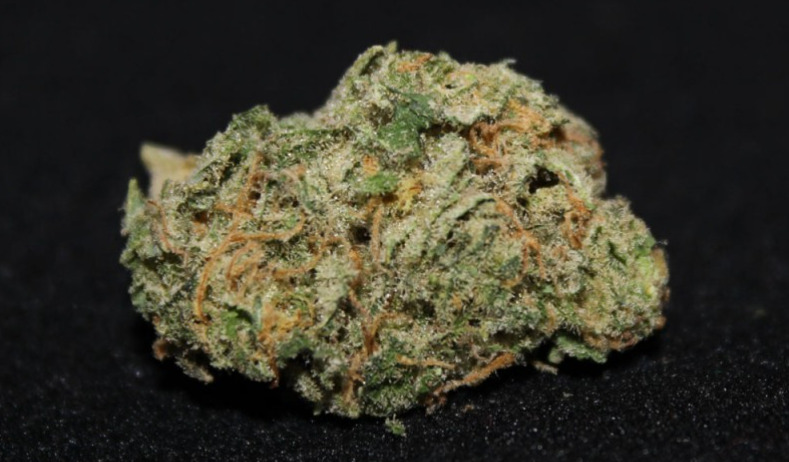According to the old proverb, “Good things come to those who wait.”
As a sativa aficionado, I can definitely appreciate this notion with regard to growing cannabis, and Hawaiian Sativa is well worth it.
Sativas can require 10 weeks or longer for flowering time, compared with indicas that typically take 45-60 days and have higher yields. Of course there are exceptions like Blue Dream (a sativa-leaning strain with higher yields), but Hawaiian Sativa is true to form.
The majority of the cannabis breeding from the past 30 years was done illegally and without much documented preservation of landrace genetics. As such, it is rare to find pure sativas in Colorado stores, although not impossible. The Seedfinder entry for Hawaiian Sativa says it’s a stabilized landrace that it takes a full 12 weeks to flower; a fully-grown, 8-foot tall outdoor plant yields eight ounces (224 grams) while a plant grown indoors in a 2-gallon pot yields a measly three-quarters of an ounce (21 grams).
Lucky for me — and anyone who likes to smoke the same strain regularly — many commercial cultivators divide their warehouses into multiple rooms for the vegetative and flowering periods to allow them to have fresh product on a regular basis, known as “perpetual harvest.”
Hawaiian Sativa by the numbers: $9/gram, $25/eighth $50/quarter at Infinite Wellness Center (medical), 1701 Kipling St. #104, in Lakewood
My yearning for a stimulating sativa smoke — and my freshly renewed medical card — got me thinking about my old stomping grounds. So, I decided to stop at Infinite Wellness Center in Lakewood, where I worked as a budtender off and on for almost two years. I went in the early afternoon on a Wednesday to make sure I avoided a crowd.
Shopping outside of peak dispensary hours has definite benefits. I wanted to take my time and see how Infinite’s offerings had changed since my days there (and catch up with the staff), although it was great to see they still had one of my perennial favorite sativas.
I wouldn’t normally ask a budtender to show me 15 different strains knowing I wasn’t going to buy more than one. “Window-shopping” for weed is like asking a sales associate to help you try on 12 different pairs of snowboard boots, only to buy a pair of gloves and be on your way — it’s tiresome and provides marginal return for the employee. However, JZ is a former coworker and good friend, so he took all the jars out and let me smell them one by one to my heart’s content like a kid in a candy shop.
While there were standouts — Jilly Bean, G13 and Lemon OG — my heart still longed for the Hawaiian. Neither the Hawaiian’s sweet, complex flavor profile nor the mental stimulation it provides is unique, but finding a strain that blends the two is a real treat.
Once I got my fix of smelling and looking at flower, I paid for my couple of grams and edibles and went on my way.
The next morning, I was ready to smoke. When I worked at Infinite, I rarely had less than an eighth of Hawaiian Sativa at the ready, as it competed with Durban Poison as a pairing with my morning cup of black coffee. I often opted for the sweet, cerebral Hawaiian smoke over the raciness of the pungent Durban. While the Durban provides an energy boost for me that complements exercise, the mental stimulation sans increase in heart rate of the Hawaiian is more fitting for a day in the office.
Here’s some trivia about my two go-to sativas: Durban Poison is African in origin; Hawaiian Sativa is likewise an equatorial sativa landrace that according to Seedfinder originated on the Big Island of Hawai’i and was stabilized by the now-defunct Federation Seed Company of Canada.
Back to my morning ritual of coffee and cannabis. I fished out one of the two half-gram nugs and a pack of rolling papers. The leaves were light green, almost appearing bluish and had an abundance of hairs in a shade of orange that looked faded. The nug was covered in frosty trichomes. When I pinched it, a few of the outer, dry leaves crumbled off. It flattened and didn’t decompress at all, also leaving a stickiness on my fingers. I would have preferred just enough moisture for the nug to decompress slowly like a blood-pressure cuff, but it smoked just fine. The fragrance was complex — mostly sweet with hints of earth, pine and mint.
I went outside to the balcony to light up the slender “pinner” joint. Initially, the flavor was extremely sweet with a hint of pine. It left a subtle minty aftertaste and a tingle on my tongue. The piney taste and mintiness carried into the nose accompanied by a subtle citrus that caused me to sneeze. Despite the uniform trichome coverage, it was a smooth smoke, and I didn’t cough until after the third hit.
The high was energetic and uplifting, particularly in the mind. Before I sparked the joint, my brain was a jumbled mess of tasks that I knew needed attention but without any plan of attack. It was overwhelming. Once the high hit me, I started to systematically prioritize my task list and mentally prepare for the day. The cerebral stimulation was accompanied by a slight relaxation in my eyes. I put on my sunglasses and jacket and decided to go for a walk. I was so engrossed in work brainstorming, I hardly noticed the cold, sharp breeze on my face.
Oh, Hawaiian Sativa! How I missed your ability to alleviate my anxiety! How I missed your motivational powers! How I missed your saccharine smoke on my lips!
Once I had finished planning my work for the day, I started to contemplate the strain name. Unlike most strains that have obscure, seemingly random names like Headband or Poochie Love, this one was as explicit as can be. The typical sweet taste and cerebral high reminded me of the legendary Maui Waui. According to Jason King’s “The Cannabible 2,” Maui Waui (Wowie) was never one particular strain, but rather the family of equatorial sativas that have grown rampant through the volcanic island chain, even though some stores claim to carry the original. According to King, the air, soil and other conditions in Hawaii are so conducive to growing cannabis, that strains naturally adapt to their environment after a couple of harvest cycles.
Based on this description, Infinite’s Hawaiian Sativa may, in fact, be of the Maui Waui family.
Regardless of whether or not it is Maui Waui, it wows me every time.
Originally written for and published by The Cannabist, a division of The Denver Post, on March 16, 2016


